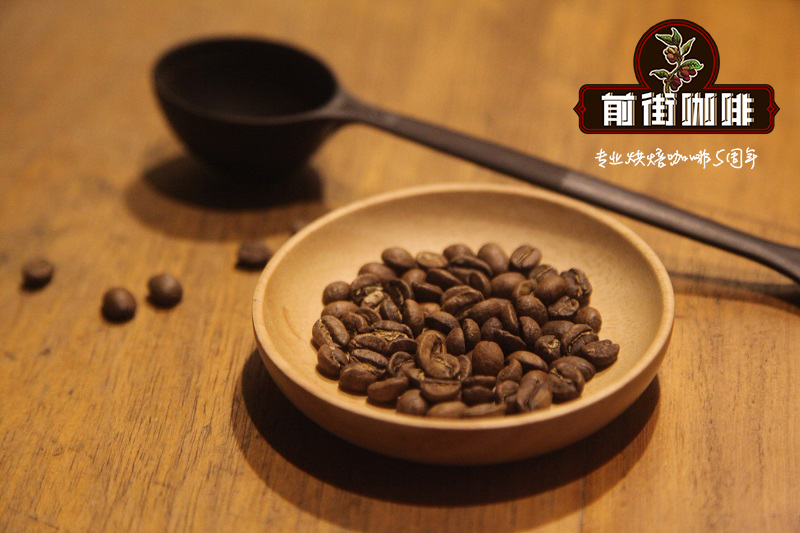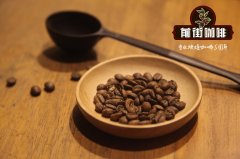Ethiopian Coffee recommends Ethiopia's Best Coffee Yega Chevy Coffee Flavor introduction

Professional coffee knowledge exchange more coffee bean information please follow the coffee workshop (Wechat official account cafe_style)
Qianjie-Ethiopian Coffee introduction
Ethiopia is known as the birthplace of Arabica coffee. Nowadays, all Arabica coffee in the world originates from Ethiopia, and coffee is also an important source of economic income for Ethiopian countries. More than 60% of the foreign exchange earnings are contributed by coffee, and more than 15 million people depend on coffee for a living.
Its unique floral citrus flavor is also very popular and has become one of the synonyms for boutique coffee.
Ethiopia has a vast territory and a wide geographical environment. There are dry deserts in the east and tropical jungles in the southwest. Ethiopia is relatively high above sea level, with an average elevation of 2500-3000 meters, which is known as the "roof of Africa". The highest point is 4533 meters above sea level. The East African Rift Valley runs through Ethiopia.
Ethiopia can only produce Arabica beans. Because they think this can protect the production of pure Arabica beans, and there is a law forbidding the import of robusta beans to avoid destroying the species.
Yega Xuefei YIRGACHEFFE
The coffee flavor in this producing area can be said to be extremely unique. The washed coffee from Yega Chuefei is light and elegant with explosive aromas of flowers and fruits, rich aromas of citrus and flowers and fruits. For many people, these coffees taste more like Earl Grey Tea, unlike coffee, which is definitely worth a try. There is also sun-treated coffee in this area, which tastes unique and delicious.
Altitude: 1750-2200 m
Variety: original species
Coffee taste
Ethiopian coffee has a wide variety of flavors, ranging from citrus (such as bergamot), floral aromas to sugared fruits and even tropical fruits. The best washed coffee may show elegant, complex and delicious flavor, while the best sun-treated coffee will show unrestrained fruity and unusually charming flavor.
In short: Qianjie is a coffee research hall, happy to share the knowledge about coffee with you, we share unreservedly just to make more friends fall in love with coffee, and there will be three low-discount coffee activities every month. The reason is that Qianjie wants to make more friends drink the best coffee at the lowest price, which has been Qianjie's tenet for 6 years!
END
Important Notice :
前街咖啡 FrontStreet Coffee has moved to new addredd:
FrontStreet Coffee Address: 315,Donghua East Road,GuangZhou
Tel:020 38364473
- Prev

Ethiopian Coffee how about Ethiopian Coffee Coffee
Professional coffee knowledge exchange more coffee bean information please follow the coffee workshop (Wechat official account cafe_style) front street-Ethiopian coffee introduction if the coffee beans originating in Africa, you will feel the obvious sour and fruity characteristics. In Ethiopia, in particular, coffee from this region can feel tea-like mellow, blueberry flavor, and
- Next

What are the characteristics of Yejashefi Coffee? introduction to the taste of Yejashafi coffee
Professional coffee knowledge exchange more coffee bean information please follow the Coffee Workshop (Wechat official account cafe_style) Front Street-Yega Chuefei Coffee introduction Yega Sidamo Province Sidamo Gedeo region today, Ethiopia is an important coffee producing country, with about 12 million people engaged in coffee production, is a major exporter of Arabica coffee beans in Africa. The quality coffee here
Related
- Beginners will see the "Coffee pull flower" guide!
- What is the difference between ice blog purified milk and ordinary milk coffee?
- Why is the Philippines the largest producer of crops in Liberia?
- For coffee extraction, should the fine powder be retained?
- How does extracted espresso fill pressed powder? How much strength does it take to press the powder?
- How to make jasmine cold extract coffee? Is the jasmine + latte good?
- Will this little toy really make the coffee taste better? How does Lily Drip affect coffee extraction?
- Will the action of slapping the filter cup also affect coffee extraction?
- What's the difference between powder-to-water ratio and powder-to-liquid ratio?
- What is the Ethiopian local species? What does it have to do with Heirloom native species?

